RARE! WWII 1940 BLITZ Battle of Britain Captured German Luftwaffe Navigator's Bombing Raid Map of Hampshire
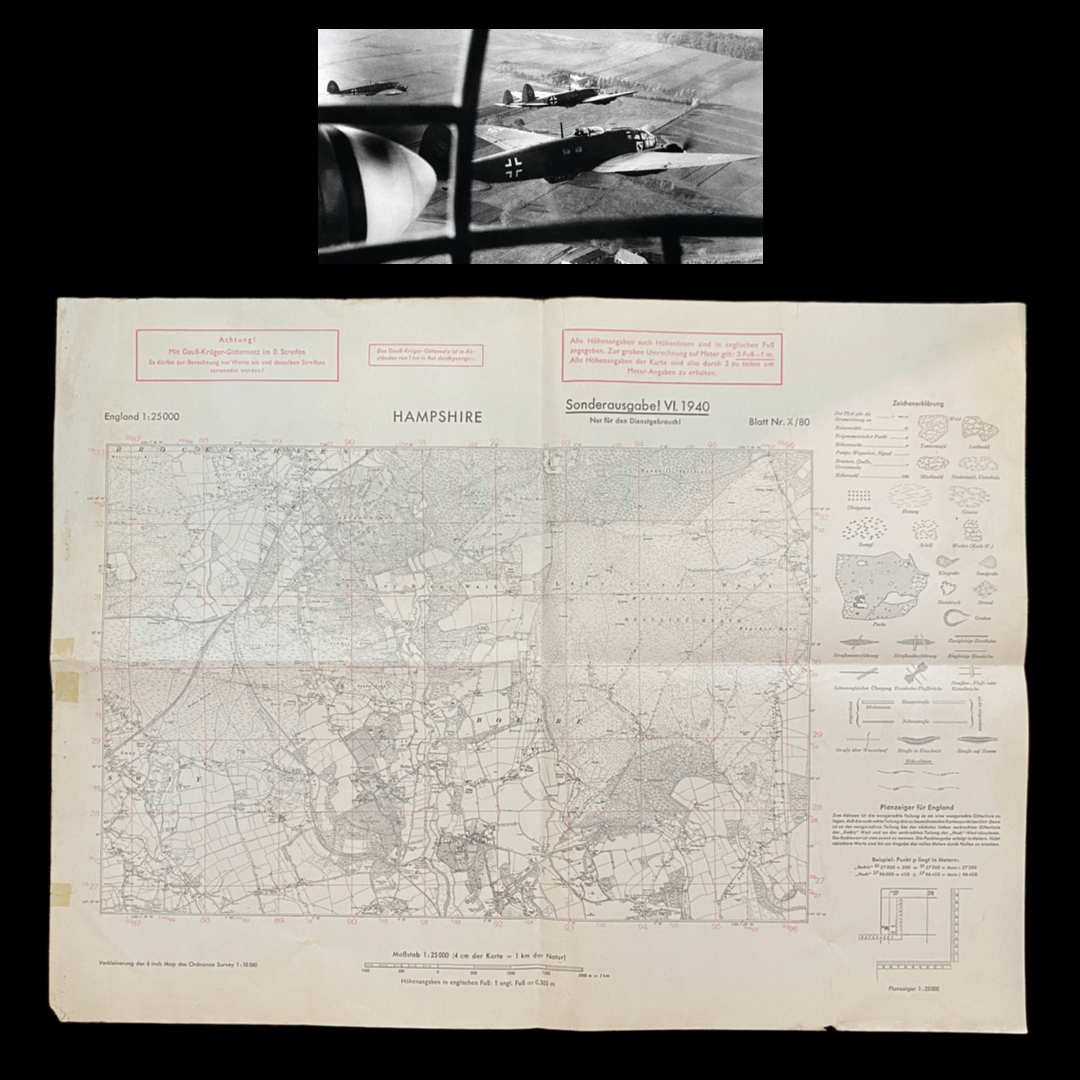

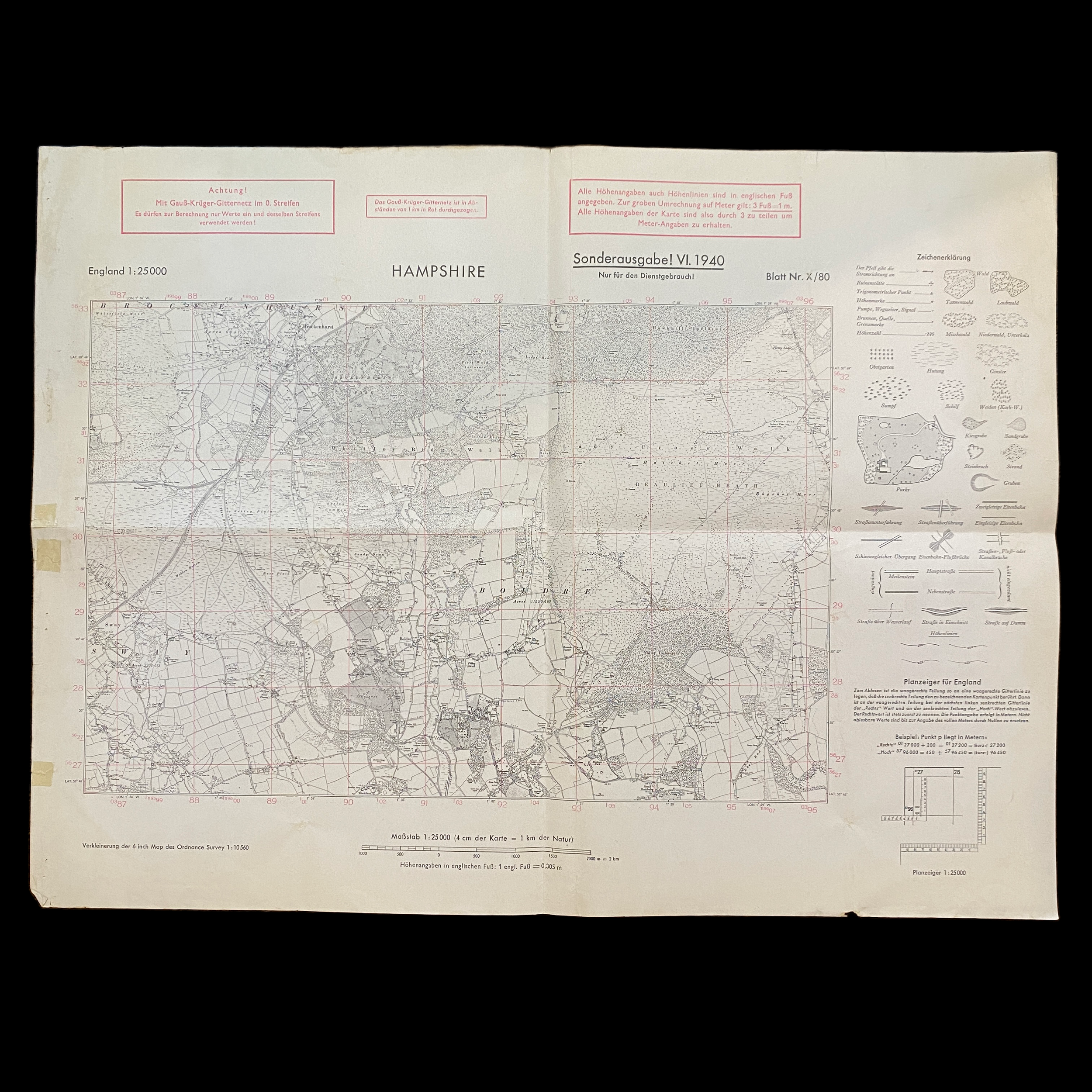
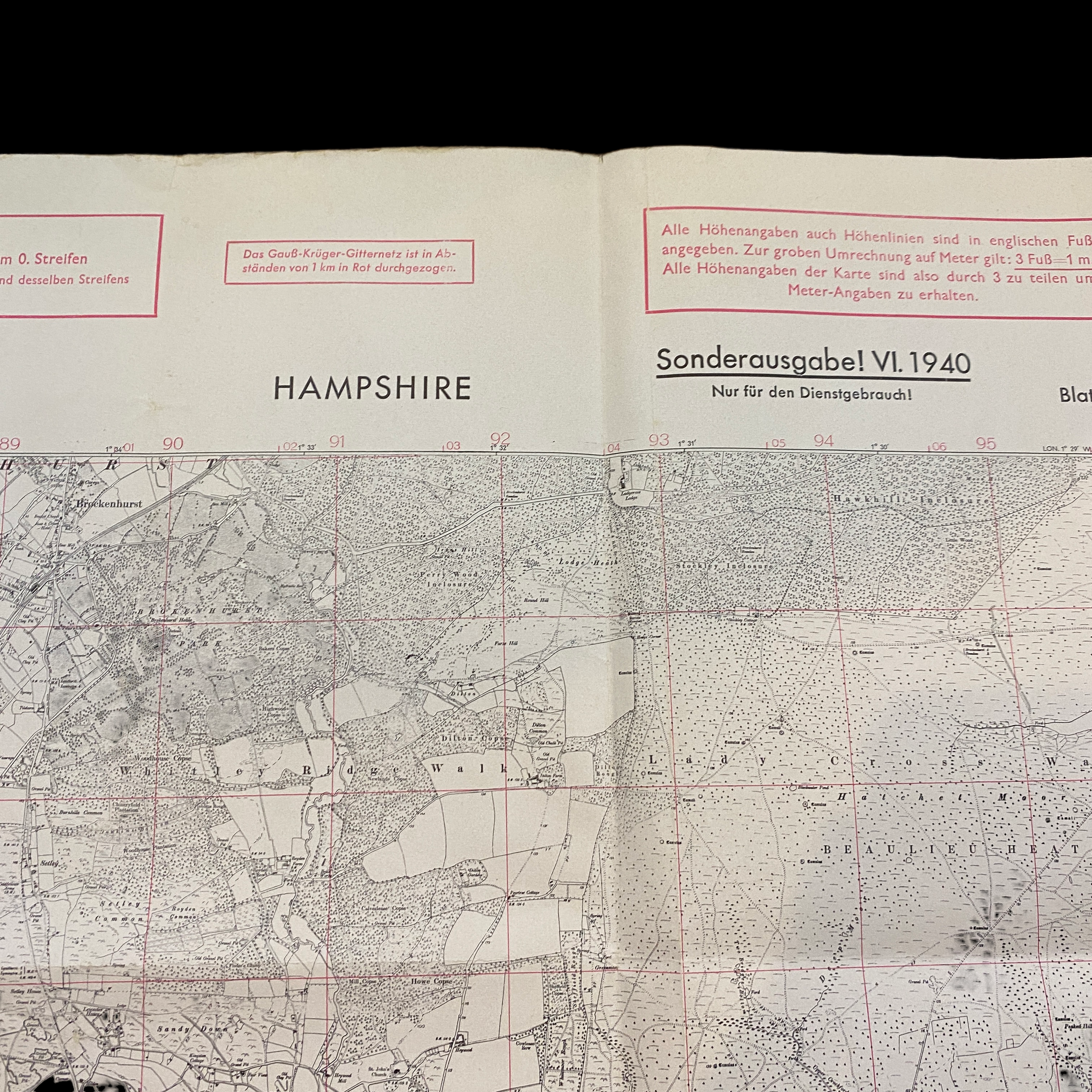
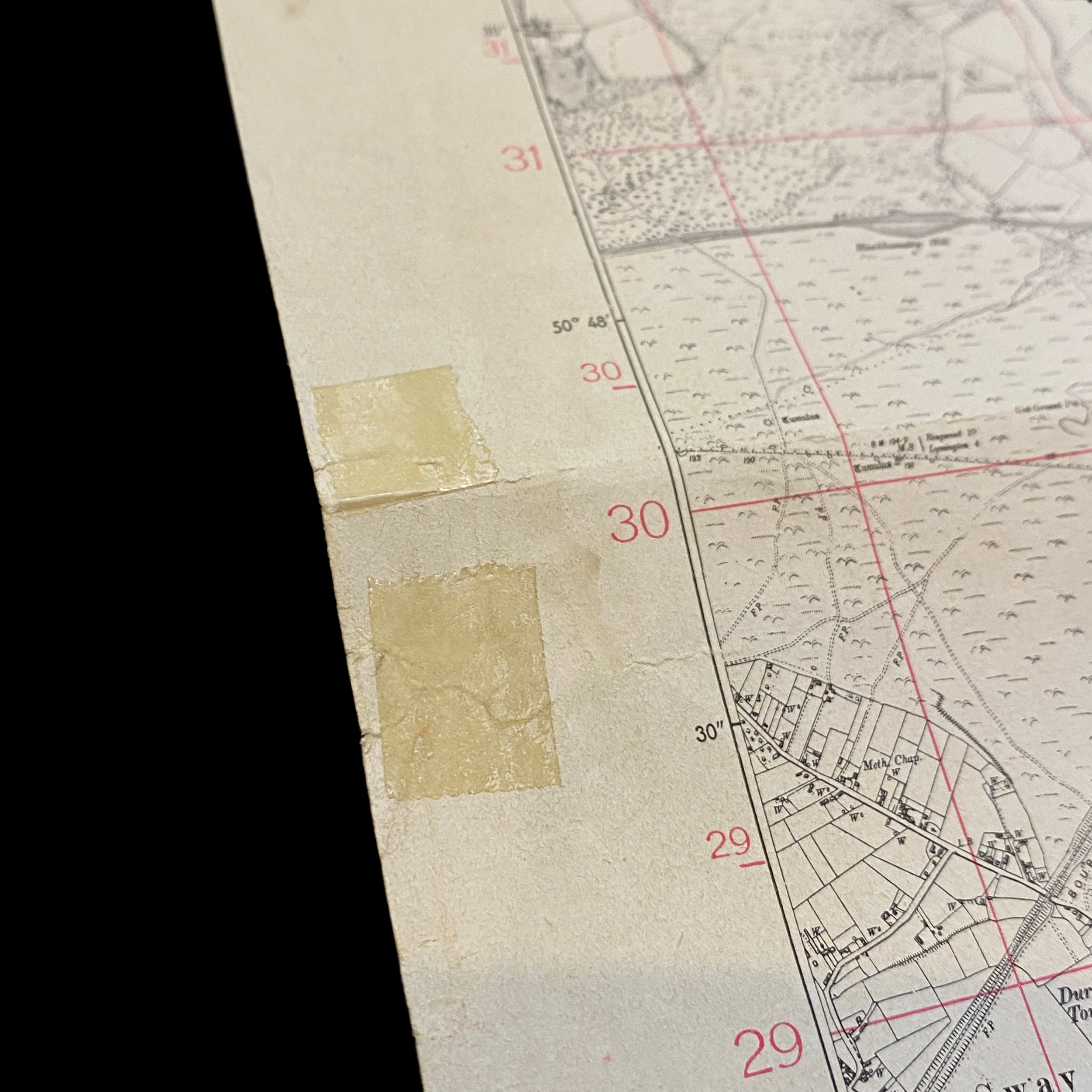


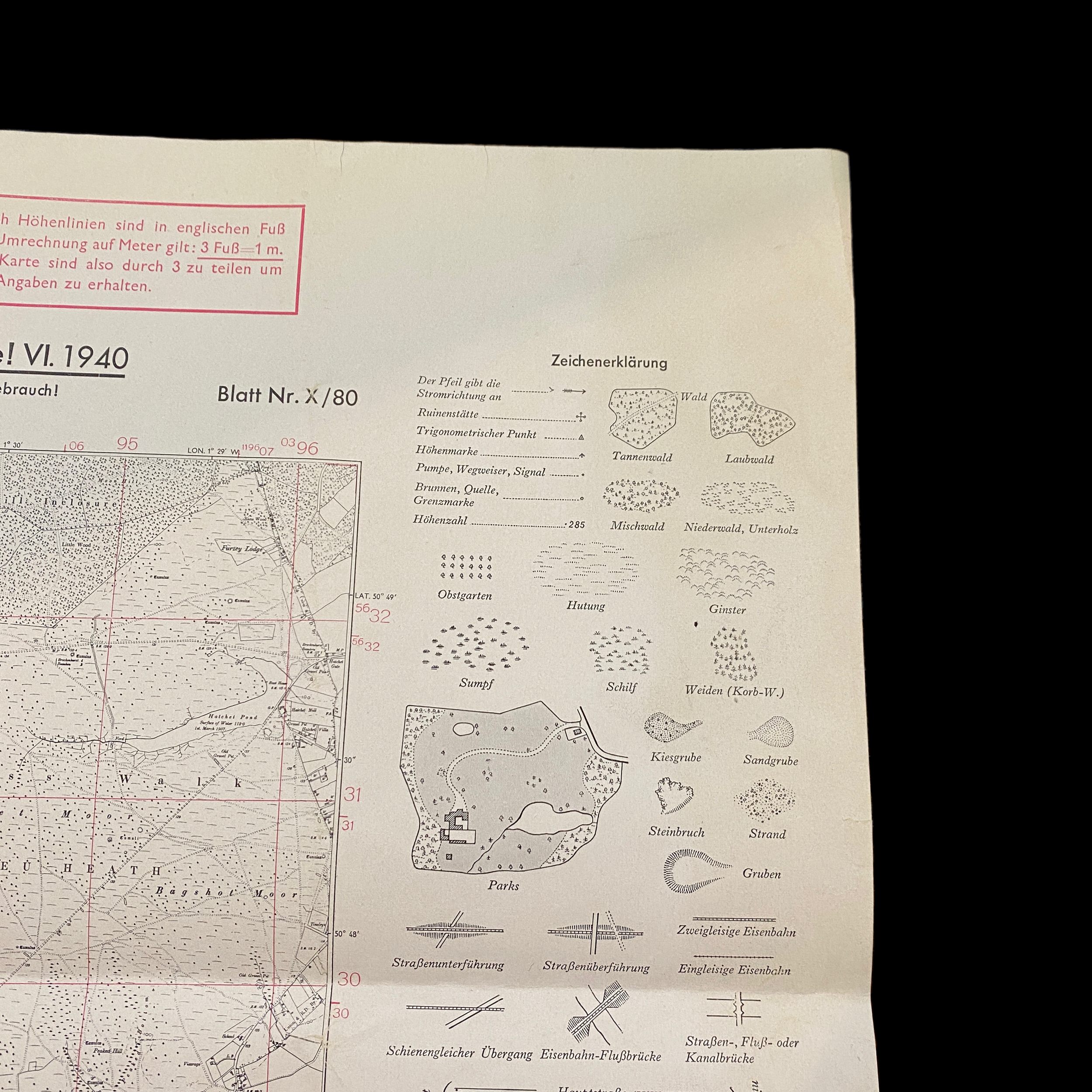
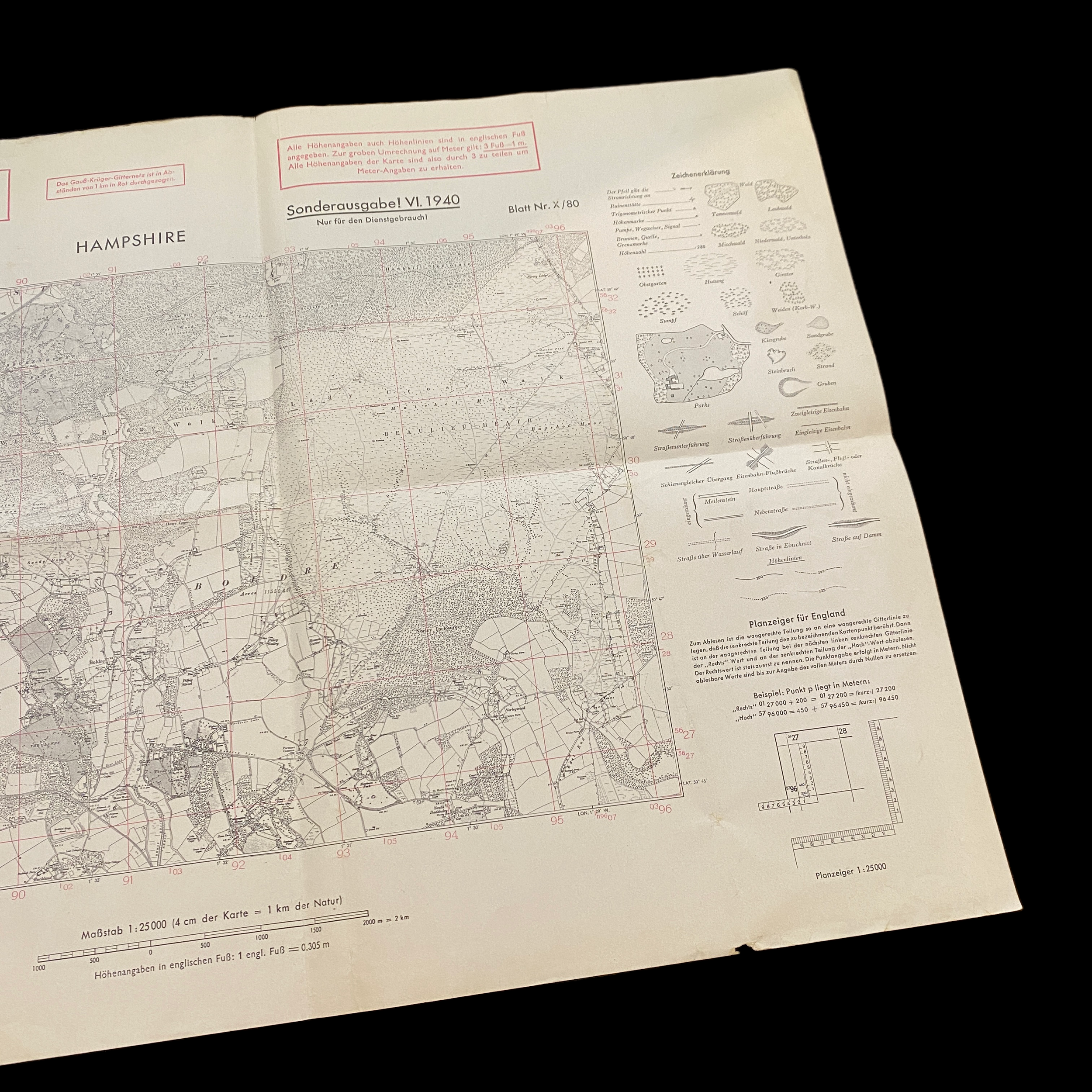
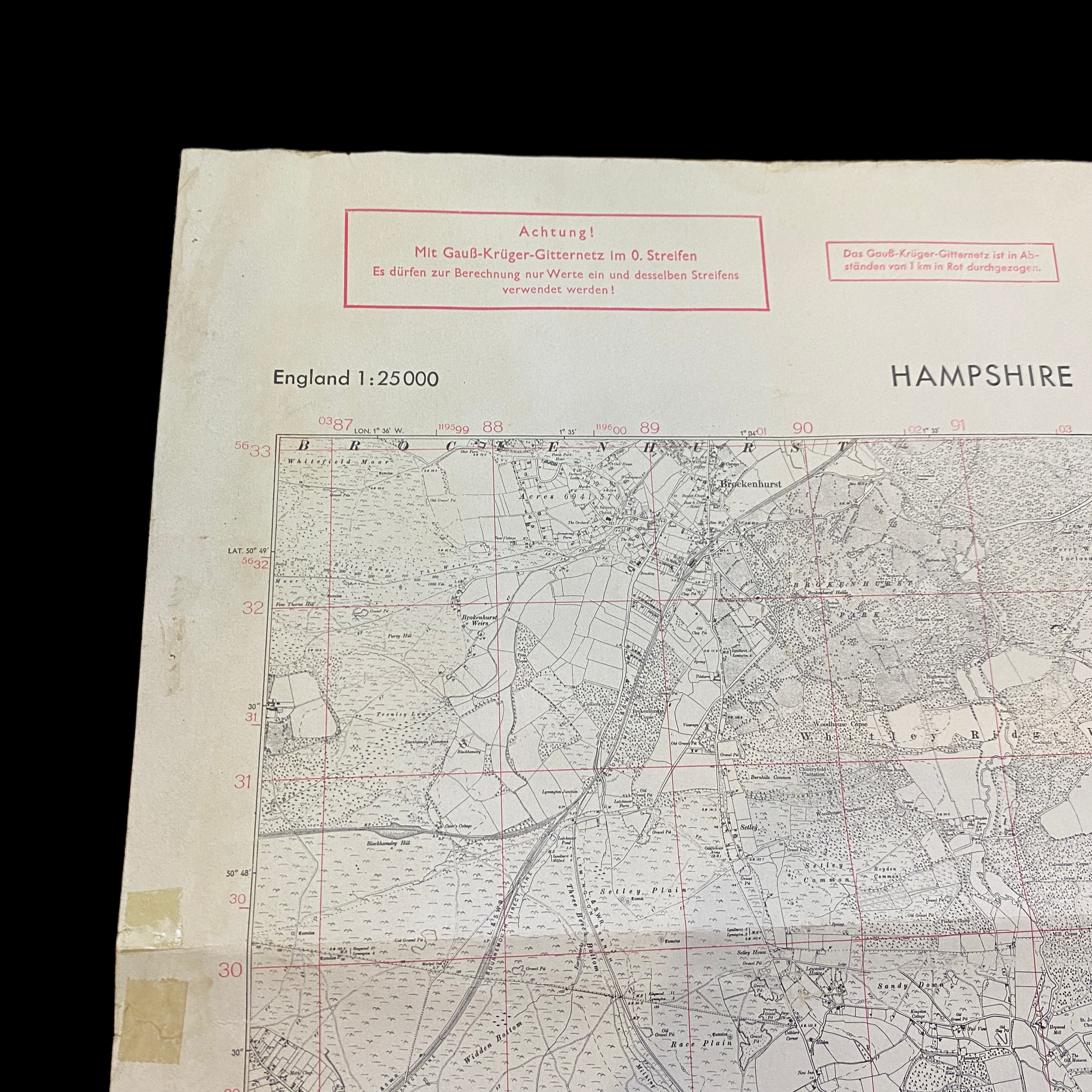
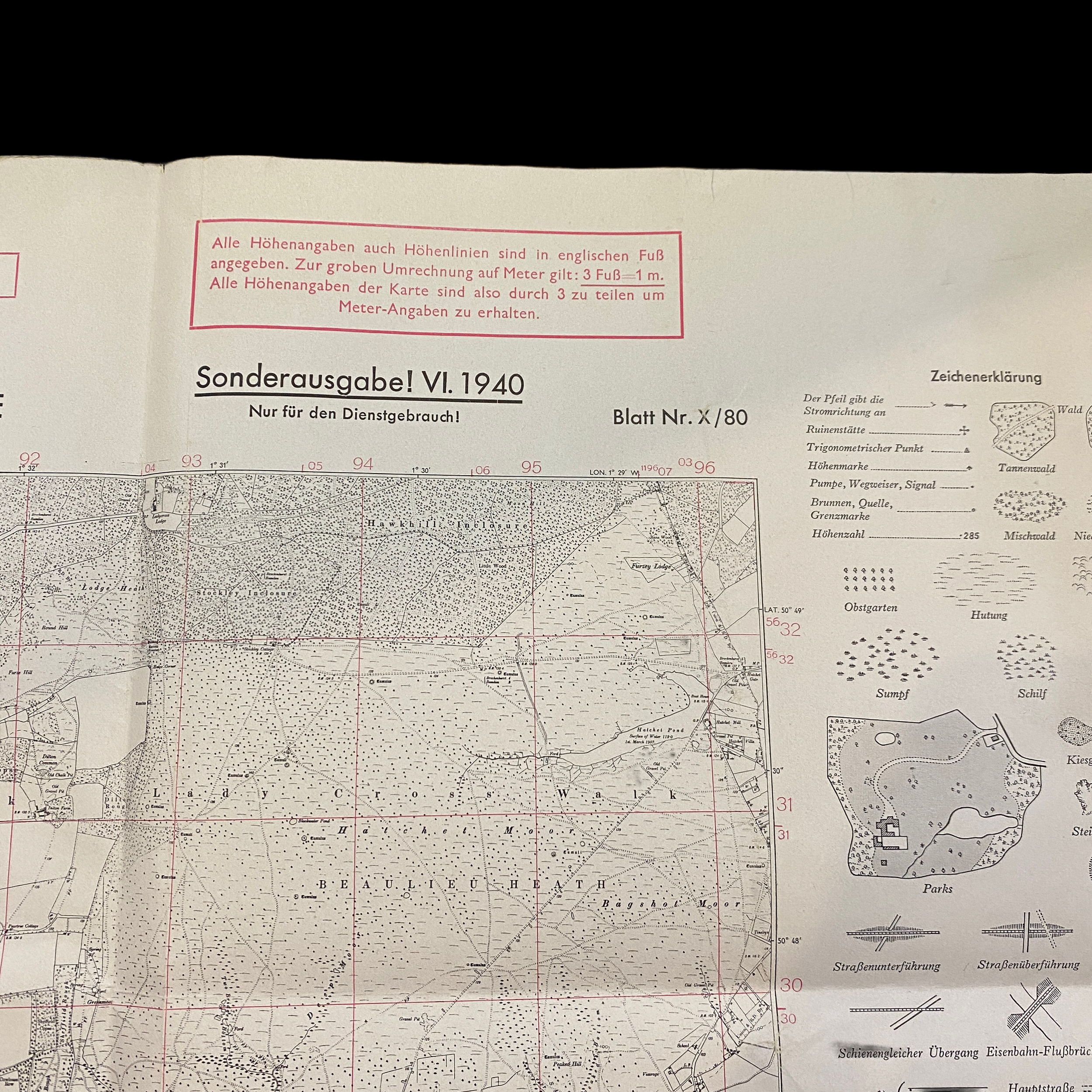
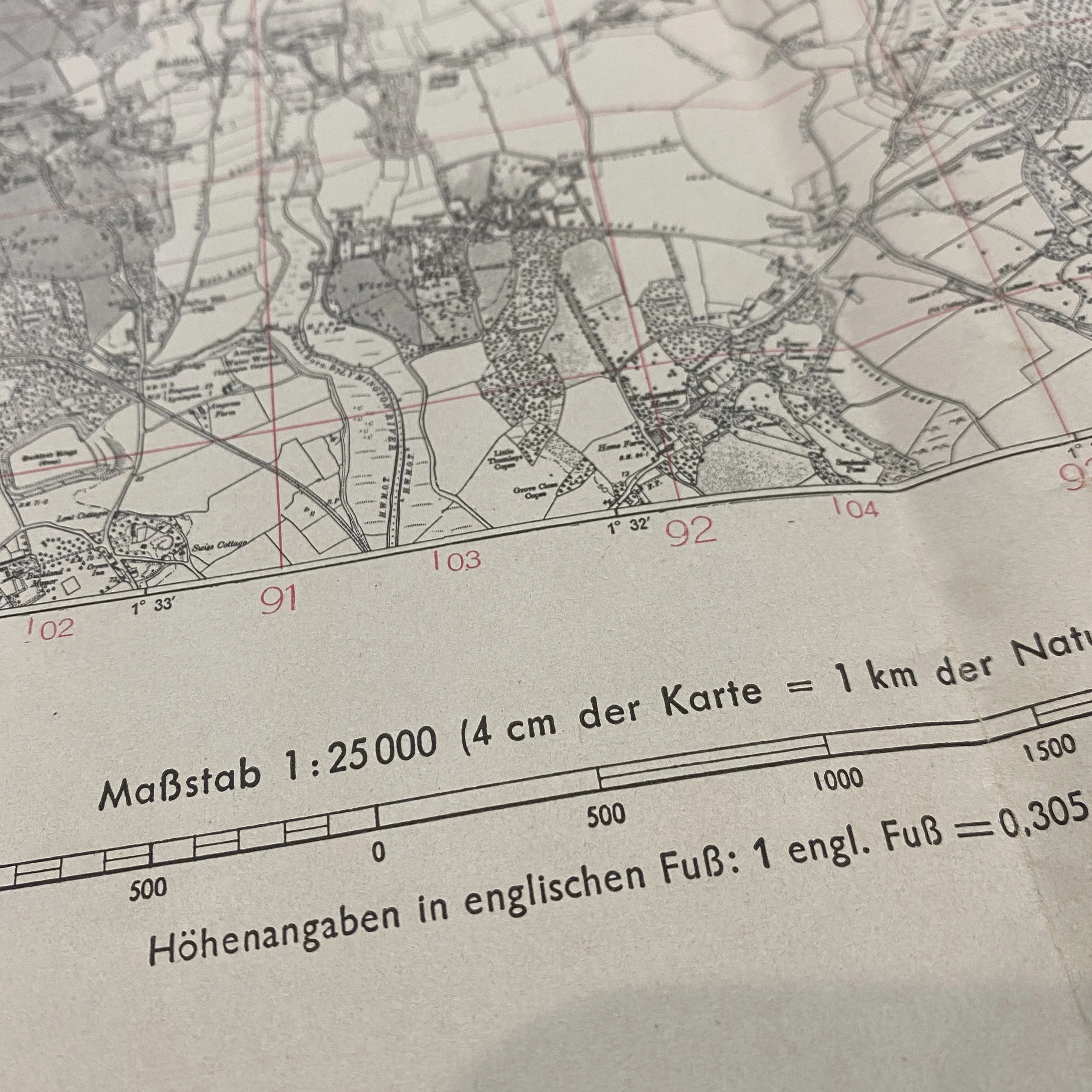
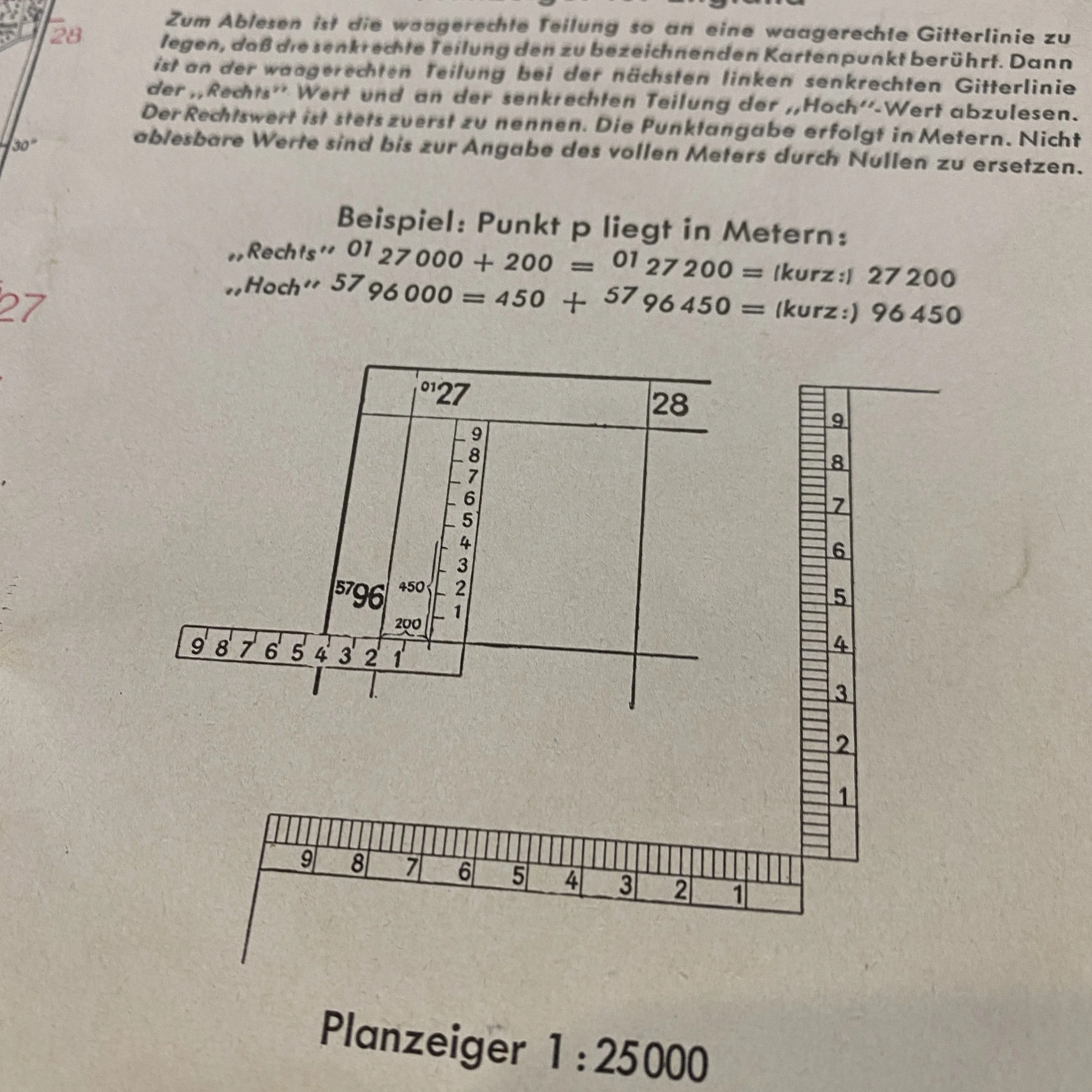



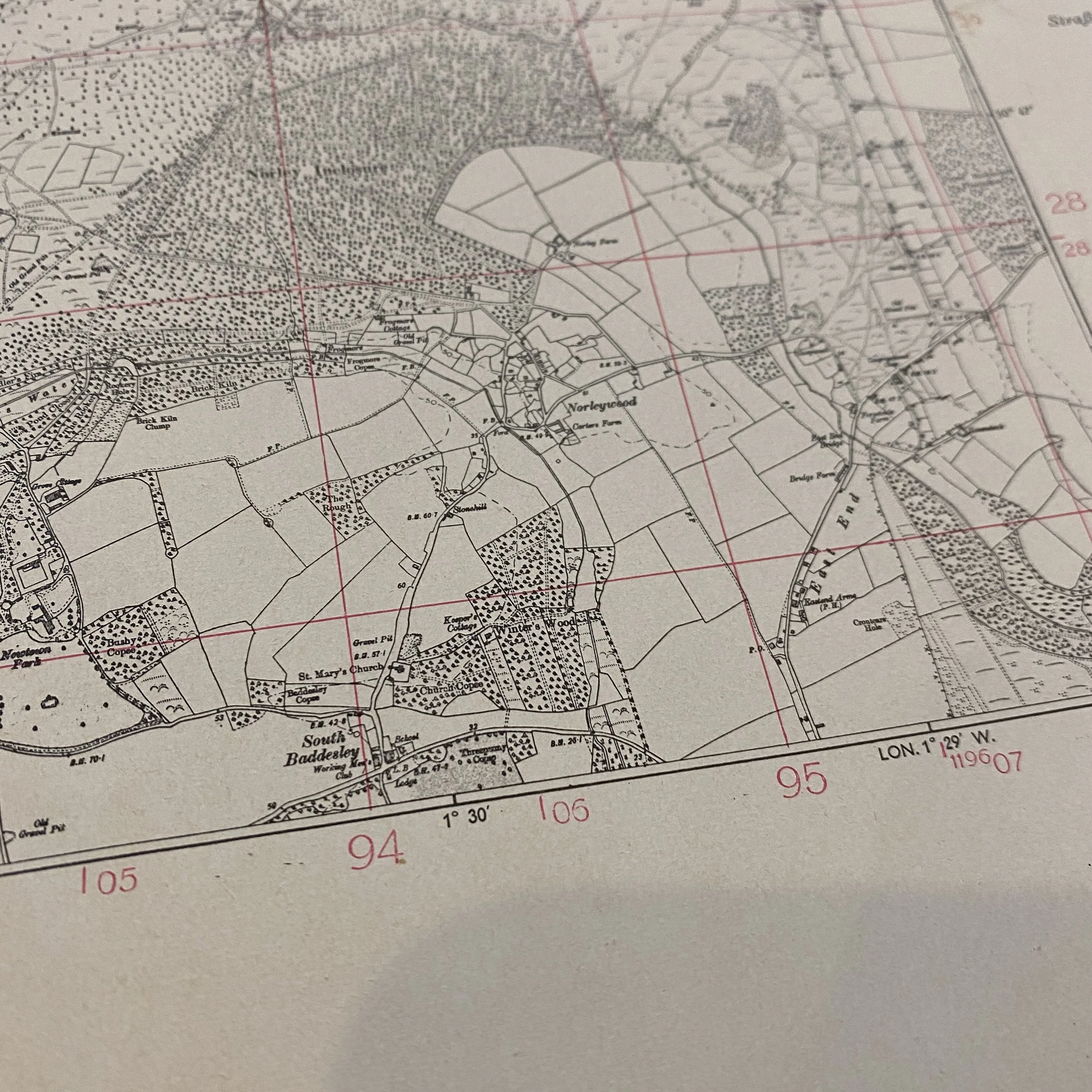





RARE! WWII 1940 BLITZ Battle of Britain Captured German Luftwaffe Navigator's Bombing Raid Map of Hampshire
Comes with hand-signed C.O.A.
This incredibly rare museum-grade artifact is a captured German air raid map from a downed German bomber during the famous Battle of Britain. This 1940 special printing raid edition shows the British town of Hampshire and was used during the heavy bombing of Hampshire and Southhampton during WWII. Southampton was a strategic bombing target for the Luftwaffe as it contained both busy docks with associated business premises and factories and the Supermarine factory building Spitfires in Woolston. Being a large port city on the south coast it was within easy reach of German airfields in France. This special printed raid map would have been used by German Luftwaffe navigators after crossing the English Channel for the most accurate navigation and target identification over Hampshire and the surrounding region.
During the war, 57 attacks on the city were made, but over 1,500 air raid warnings were issued. According to the Air Raid Precautions (ARP) Department, approximately 2,300 bombs were dropped amounting to over 470 tonnes of high explosives. Over 30,000 incendiary devices were dropped on the city with nearly 45,000 buildings damaged or destroyed, with most of the city's High Street being hit.
The Battle of Britain in World War II was between Britain’s Royal Air Force (RAF) and the Luftwaffe, Germany’s air force, and was the first battle in history fought solely in the air. From July 10 through October 31, 1940, pilots and support crews on both sides took to the skies and battled for control of the airspace over Great Britain, Germany and the English Channel. The powerful, combat-experienced Luftwaffe hoped to conquer Britain easily, but the RAF proved a formidable enemy.
On July 10, 1940, the Luftwaffe attacked Britain, performing reconnaissance missions and targeting coastal defences, ports and radar stations. Their efforts, however, did little damage to the RAF.
In mid-August, using mostly single-engine Messerschmitt BF-109 combat planes, the Luftwaffe began attacking Britain’s airfields, air fighter production sites and targeting RAF Supermarine Spitfires and Hawker Hurricanes in the air.
Blitz Begins:
Despite being outnumbered, the RAF retaliated by bombing Berlin. Enraged, Hitler and Göring changed tactics and ordered a bombing campaign known as “the Blitz” against London, Liverpool, Coventry and other major cities, hoping to decimate the morale of the British people. To ensure massive casualties, German bombing was carried out at night.
On September 15, the Luftwaffe began two massive raids on London, eager to force the British to the negotiating table, but they could not defeat the RAF or gain control of British airspace. The Luftwaffe was by then stretched too thin, poorly organized and unable to keep up with the demand for new fighter planes or overcome the RAF’s superior technology.